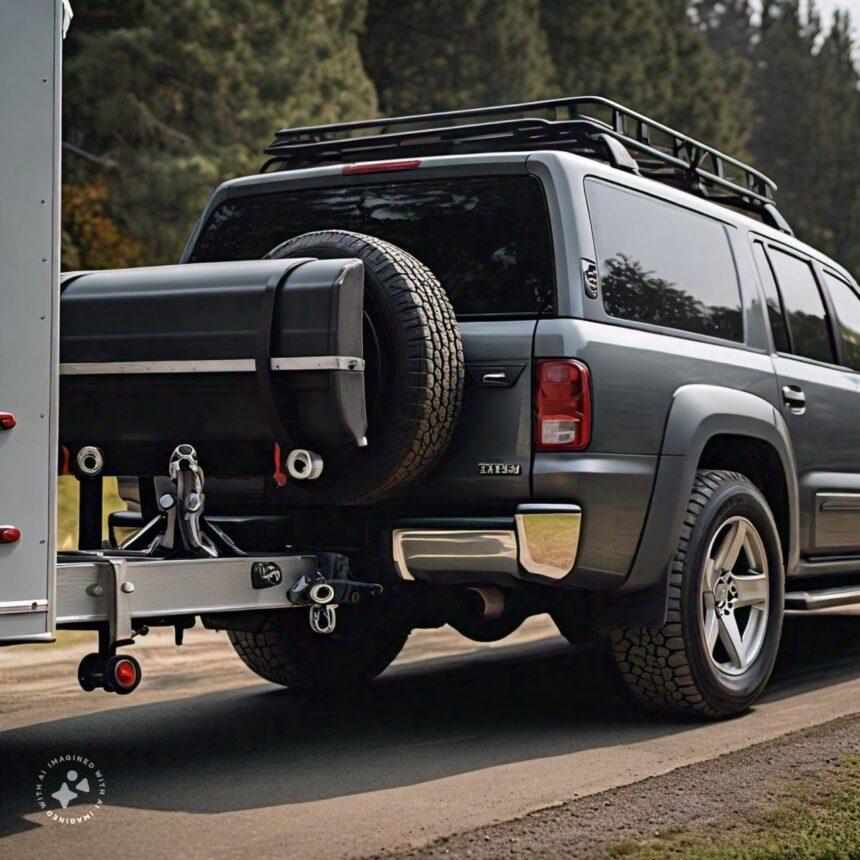Key Takeaways:
- Proper hitching is essential for safe towing.
- Different types of hitches serve various purposes.
- Understanding weight distribution can prevent accidents.
- Regular maintenance of hitch equipment is crucial.
Introduction to Hitching: Why It Matters
When it comes to towing, safety and stability are paramount. Proper hitching is technical and essential to guarantee road safety for all users. An incorrectly hitched trailer can lead to accidents, swaying, and even loss of control. For anyone involved in frequent towing, understanding the fundamentals of hitches is essential for a smooth, hassle-free experience. The importance of this knowledge cannot be overstated, as improper hitching can result in catastrophic consequences.
Let’s delve into why these elements are so critical, starting with the various types of hitches available and their specific uses. Proper knowledge and execution of hitching procedures mean a safer, more enjoyable journey for drivers and other road users.
Types of Hitches and Their Uses
Several types of hitches are designed for specific purposes and varying weights. For instance, a ball mount hitch is standard for light-duty towing and is often used for smaller trailers, boats, or utility trailers. Casual users favor it because of its simplicity and ease of installation. However, heavy-duty trailers like RVs and gooseneck trailers, which demand a considerably stronger connection point usually installed in a pickup truck’s bed, are best suited for a fifth-wheel hitch.
Knowing which type of hitch to use can make all the difference in your towing experience. The right hitch ensures stability, safety, and ease of use, while the wrong hitch can lead to many issues, including swaying, control loss, and increased wear on your vehicle.
The Role of Weight Distribution
Weight distribution is a critical factor in hitching. If your trailer’s weight isn’t evenly distributed, it can cause excessive swaying and loss of control. Many towing accidents could be prevented simply by paying attention to proper weight distribution. Overloading one side of your trailer or improperly distributing the load can cause your vehicle to handle unpredictably, increasing the risk of an accident.
Understanding the principles of weight distribution can help you choose the right hitch and set it incorrectly. For instance, a weight-distributing hitch can help manage heavy loads by spreading the weight evenly across all axles of the tow vehicle and the trailer. This enhances vehicle handling and gives an additional layer of safety by lowering stress on essential components.
Step-by-Step Guide to Hitching a Trailer
Successfully hitching a trailer involves steps that ensure safety and stability. Here is a detailed guide to get you started:
- Ensure your vehicle and trailer are on level ground. This provides a stable base and makes it easier to connect the hitch components correctly.
- Connect the hitch ball to the trailer coupler. Ensure the coupler is securely latched onto the ball to prevent detachment while driving.
- Crisscross the safety chains underneath the trailer tongue. This prevents the tongue from hitting the ground if it detaches from the hitch ball.
- Plug in the electrical connection to ensure brake lights and indicators are functional. Proper lighting is crucial for safe communication with other drivers.
- Check the load distribution and adjust if necessary. A well-distributed load ensures better handling and reduces the risk of swaying.
Common Mistakes to Avoid
Towing can be complicated, especially for beginners. Common mistakes include ignoring weight limits, improper hitching, and neglecting regular maintenance. By avoiding these errors, you can prevent mishaps and expensive repairs. Neglecting to adhere to weight limits set by your vehicle and hitch can cause severe damage and pose a safety risk. Overloading your trailer can lead to excessive strain on your towing vehicle, causing brake failure or tire blowouts.
Another frequent mistake is failing to secure the hitch components properly. Always double-check connections, safety chains, and electrical connections before hitting the road. A little caution can go a long way in preventing mishaps.
Maintaining Your Hitch Equipment
Regular maintenance of your hitch equipment is just as essential as the initial setup. Inspect your hitch components regularly for signs of wear and tear. Look for cracks, rust, or any damage that could compromise the integrity of the hitch. Ensure that moving parts are well-lubricated and replace any damaged parts immediately. This can prolong the lifespan of your equipment and enhance safety. Routine checks can also help identify potential issues before they become critical problems.
Keeping your hitch components in top condition ensures safety and enhances your towing system’s performance. Frequent maintenance keeps your towing experience trouble-free and prevents expensive repairs.
The Role of Technology in Modern Hitching
Advancements in technology have made hitching easier and safer. Modern hitches come with features like sway control and weight distribution systems. These advanced tools can significantly improve your towing experience, making it smoother and safer. These technological enhancements offer drivers an added layer of safety and convenience.
For example, sway control systems automatically adjust braking and power distribution to stabilize your trailer, even during windy or sudden maneuvers. Such technology makes towing more accessible and significantly reduces the risk of accidents.
Conclusion
Proper hitching is essential for safe and smooth towing. Understanding the hitches’ types, weight distribution’s importance and following best practices can ensure a worry-free towing experience. Regular maintenance and leveraging modern technology add extra layers of safety, making your journeys enjoyable and secure.
Whether you’re an experienced tower or a beginner, taking the time to understand and apply these principles can significantly improve your overall experience. Safe towing ensures your safety and the safety of others on the road, making it a responsibility that should not be taken lightly.


